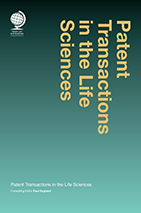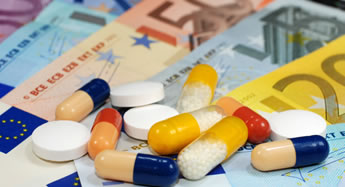Life sciences patent licences - royalties
When negotiating a patent licence, there are a number of general issues that must be considered and agreed. Here we consider royalties:
The manner in which royalties become payable in patent licences varies in structure and complexity according to the nature and circumstances of the deal. Typically, royalties are paid as a percentage of sales, or as a predetermined lump sum, or a mixture of both. Basing the royalty on sales, rather than profits, has the advantage that it avoids complex investigation of the licensee's balance sheet; sales figures, by comparison, are relatively easily understood and calculated. Furthermore, a badly run licensee may make only a small profit, despite large sales, or, through no fault of the licensor, no profit at all. Accounting issues get more complicated if the licensee sells the relevant product either in combination or bundled with other products where it can apply profits/sales prices disproportionately in favour of the products that do not bear a royalty obligation.
Additional or complementary royalty arrangements include the following:
- a down payment – a lump sum paid to the licensor at the time of signing the licence;
- milestone payments –payments which are triggered at significant stages of success in the project for which the licence is granted;
- royalty staggering – the percentage rate of royalty payments on sales changes according to the level of sales of the product for which the patent licence is needed;
- royalty stacking – the rate of royalty paid under a licence is decreased according to royalties that must subsequently be paid for licences to third party patents that are needed in order to develop a product. Typically, these will be seen in development agreements where several 'research tool' patents are needed to perform steps in a process, and it is unclear at the time of completing the agreement how many licences will be needed; and
- know-how royalties – it is common for patents not to cover every country in the world and therefore, especially in respect of successful pharmaceutical products, it is likely that commercial sales will be made in territories where there is no patent coverage. Typically royalties will still be payable in these territories, but at a much lower rate (often 50%) than in territories where sales benefit from patent coverage.
The royalty rates and lump sums agreed will vary from agreement to agreement depending on factors such as exclusivity, importance of the technology, alternatives available, projected sales, the financial risks involved in a particular project, and the relative negotiating strengths of the parties.
Royalty rates are usually highly sensitive commercial information, and are likely to be confidential. It is therefore difficult to obtain comparative rates when attempting to decide on a starting point for a royalty negotiation. However, as a general rule, royalty rates in the life sciences sector tend to be higher than those in other fields of technology, such as telecoms and electronics. It is not unusual to see rates at around the 10% mark for a licence to a product in the life sciences sector, although, process patents, such as research tools, will be considerably lower.
 This toolkit article is an extract from Patent Transactions in the Life Sciences (Globe Law and Business Publishing, September 2014).
This toolkit article is an extract from Patent Transactions in the Life Sciences (Globe Law and Business Publishing, September 2014).
If you have any questions on this article or would like to propose a subject to be addressed by Synapse please contact us.



